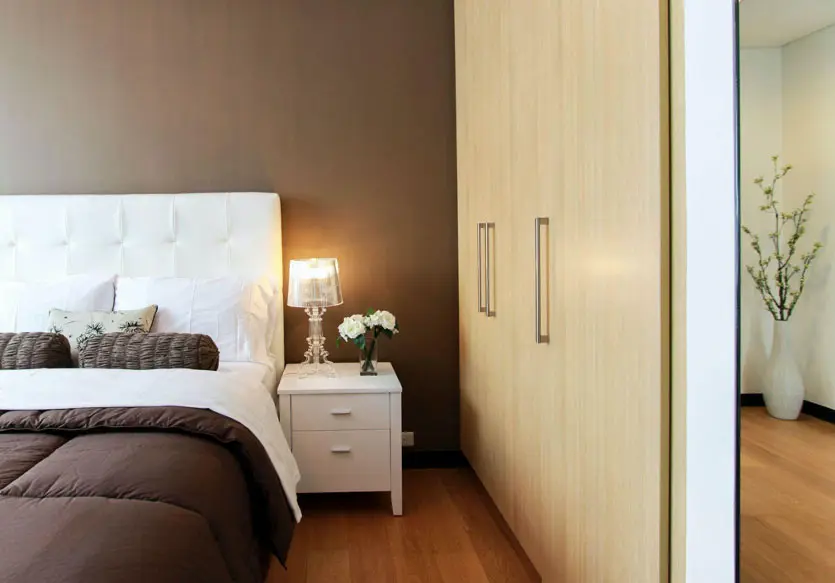How to Create a Color Story From Room to Room

There are few things that can help freshen up a tired interior design more than a fresh coat of paint. Painting your home can breathe new life into the rooms, give you a new palette of colors to work from for accessories and accents, and can help change the way you view and feel about your home.
Painting your home’s interior can sometimes feel a bit like giving a mouse a cookie; once you see how good one room looks, it’s easy to keep going from room to room until the entire space has been updated. Painting the entirety of your home’s interior can get expensive, however, at a cost of $7,500 to $10,000, so most people don’t want to experiment or make mistakes and choose the wrong color paint when they undertake this task.

One way to help ensure that your home looks great when you’re done is to come up with a color story first. A color story is a select palette of colors that are used together throughout your home to create a single, cohesive design statement. This doesn’t mean painting all your walls the same color, just that the colors will work well together and help set the stage for the rest of your interior design.
The following tips can help you create the ideal color story for your home. Just as people and homes can be different, so can the color stories that you create for your space. Learn to identify the elements that will best suit your home to get the perfect color story and the perfect paint for your interiors.
1. Identify Your Goals
Before you can start selecting the paint for your color story, you first need to identify your overall goal for the interiors. Is your home cramped and dark, and you’re hoping to lighten and brighten the space? Is the space large and echoing, and you want to make it feel cozier and more homely? Do you want to create a subtle, soft decor or do you want something more dramatic?
Color can influence all of these things, particularly when it’s applied strategically to the space. Light, cool shades make rooms seem bigger and brighter, while warm colors make the space feel cozy. Analogous colors – colors that sit side by side on the color wheel like blue and green – make a space feel soft and subtle in design, while colors that are complementary – sitting opposite one another on the color wheel like blue and orange – make a space feel dramatic and energetic.
When you create your color story, think about what you want from the interior design. Do you want to create a soft, warm, cozy interior setting or do you want something bright and energetic. No matter what your aims, your color story can help you reach it, but you do need to keep it in mind before you begin.
2. What Does Your Home’s Architecture Say?
Did you know that many architectural styles have built-in color palettes? This doesn’t mean that these are the only colors you can use in a space, but they can be a good starting point. The colors that are chosen for that architectural style tend to look the best with that style. For example, a Victorian home uses mostly colors that have a little bit of black added to them. This makes the colors ‘somber’ and in keeping with the ideals of the time.
Take a little time to research your home’s architectural style and the color palette recommended. Remember, you aren’t tied to it, but it can give you an idea of how colors can look in the space, and the hues and shades that may complement it best. Use these as a jumping off point to help narrow down your choices.
3. Look at the Elements Already in Play
Just because you’re painting your home doesn’t mean you want to go out and purchase all new flooring, cabinets, countertops, tile, and textiles. So, when you choose new colors for your home, make sure you take into account the elements already present in your home design. Chances are that like a color story, you very likely have some cohesive elements already in place that you can use to build from.
Wood flooring is a good example. Many people extend hardwood throughout the home, and they’ll use one species of wood for the entire floor. This can be used to help you set your palette colors. For example, if you have white oak floors, white oak has tones of gray and blue in it. This means that it will work well with gray, blue, taupe, and other cool colors for the walls in a subtle design. Or you can work with yellow, pumpkin, apricot, and many warm shades of green if you want something a little more vibrant. By paying attention to the materials and colors you already have, you can easily find the best colors for your walls.
4. Keep Your Palette Small
In theory, a color story could have as many colors as you have rooms in the home as long as they all have something in common to tie them together. This can be overwhelming though, which can make it harder to find the right ones. Instead, consider narrowing it down to a handful of colors, and grouping spaces together around them. For example, you may want all the hallways and common areas like foyers to have the same or similar colors. This can help you from feeling like you must select a color for every space, when really the color story should be helping to free you from doing so.
Think about the spaces you want to have their own, separate color, and then group the rest. Your kitchen may have a unique color, but maybe your living room ties in with your foyer and hallways. The idea is to get a cohesive design, and too many shades may actually have the opposite effect of what you are trying to achieve.
5. Look At Your Samples in All Lights
If you think you’ve finally narrowed down your options, and you’ve chosen some colors, make sure they really do work everywhere you want to use them. Just because you think you’ve found the perfect living room color doesn’t mean that it will also work in your foyer and hallways.
Do this: purchase a few sheets of poster board and paint these with your samples, rather than the walls. Now you can move your poster board from room to room and from wall to wall. Look at it in the sun, the shade, in the morning and in the evening. Put two colors side by side where the rooms will meet one another to make sure they flow.
Your colors should work harmoniously with one another, even if they are in opposite rooms of the home. This is what helps create that cohesive design, so be sure to look at the colors together to help make it all come together.
Create Your Ideal Color Story
The color story you create for your home will likely be unique to you and your home. It should tie together all the rooms of the home into one cohesive design, and help you better achieve your interior design goals. Take the time to really think about how and why you’ll use color in the space to help your interiors reach their full potential.










